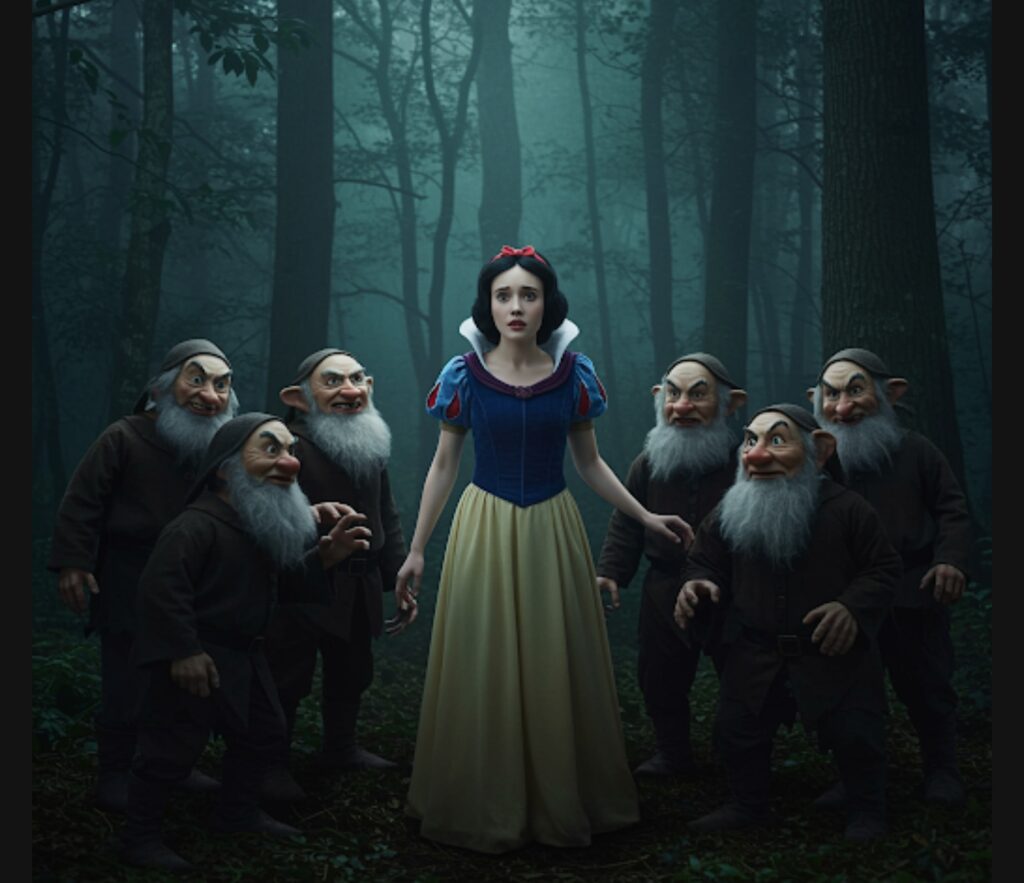The tale of Snow White is one of the most beloved fairy tales in history, immortalized by the Brothers Grimm and later by Disney’s 1937 animated classic. However, like many fairy tales, Snow White has evolved over centuries, with earlier versions containing themes that were much darker than what we see today.
While modern audiences recognize Snow White as a story of magic, jealousy, and true love, its origins in European folklore reveal a history filled with power struggles, mysterious enchantments, and harsh punishments.
A Tale Older Than the Brothers Grimm
The Brothers Grimm popularized Snow White in their 1812 collection, but earlier versions of the story existed across Europe, each with its own variations. One of the earliest known versions is Giambattista Basile’s The Young Slave (17th century, Italy).
In Basile’s tale, a girl named Lisa pricks herself with an enchanted splinter and falls into a deep sleep. Instead of being placed in a glass coffin and awakened by a prince, she is hidden away until her uncle’s wife, in a fit of jealousy, mistreats her, causing her to awaken. This version does not include the famous poisoned apple or dwarves, but it shares the theme of a young woman placed in an unnatural sleep due to external forces.
Early Oral Traditions and Evolving Storytelling
Like many fairy tales, Snow White was passed down through oral traditions before being recorded. Different regions adapted the story to their own cultural and moral values, resulting in variations that included elements of danger, deception, and survival.
For instance, some early European versions featured young women being placed under enchantments or trapped in deep sleep due to the jealousy of a stepmother or a rival. These stories often carried warnings about vanity, betrayal, and perseverance.
It’s important to note that Snow White has sometimes been confused with Sleeping Beauty, another classic fairy tale with its own unique origins. Some early versions of Sleeping Beauty contained more unsettling themes, which may have contributed to misunderstandings about Snow White’s origins.
The Brothers Grimm Version: A Darker Beginning
The Brothers Grimm first recorded Snow White in 1812, and while their version was already more family-friendly than some older folk tales, it still contained intense themes:
- The evil queen makes multiple attempts to harm Snow White, not just with the poisoned apple. She first tries to strangle her with laces, then uses a poisoned comb, before finally succeeding with the apple.
- The prince does not wake her with a kiss—instead, his servants accidentally dislodge the apple while moving her glass coffin.
- In early versions, Snow White was originally described as only seven years old, which was later adjusted in adaptations to make the story more suitable for broader audiences.
- The queen’s punishment was particularly harsh: in the Grimms’ final version, she is forced to wear red-hot iron shoes and dance until she collapses.
Modern Myths and Misinterpretations
Over the years, some misconceptions have emerged about Snow White, particularly in online discussions. Some people have speculated that earlier versions of the story contained unsettling themes related to Snow White’s interactions with the prince or the dwarves. However, there is no verified historical version of Snow White that includes such elements.
These claims likely stem from:
- Confusion with Sleeping Beauty, which in some versions contained themes of enchantment and mistaken identity.
- The general dark nature of early fairy tales, which often featured extreme trials for their protagonists.
- The way fairy tales evolved through oral storytelling, sometimes leading to exaggerated or altered interpretations over time.
The Legacy of Snow White: From Folklore to Disney Magic
By the time Snow White and the Seven Dwarfs became Disney’s first animated feature in 1937, the story had been reimagined as a heartwarming and visually stunning film. Gone were the multiple murder attempts, the eerie glass coffin scene, and the severe punishments. Instead, the film focused on Snow White’s kindness, innocence, and resilience, making it a timeless classic for generations.
The evolution of Snow White from a cautionary folk tale to a beloved fairy tale reflects the way storytelling changes over time to fit cultural values. While older versions contained elements of mystery and danger, they ultimately shared the same core message: goodness prevails over jealousy, and kindness is rewarded.
Would you ever look at Snow White the same way again?

